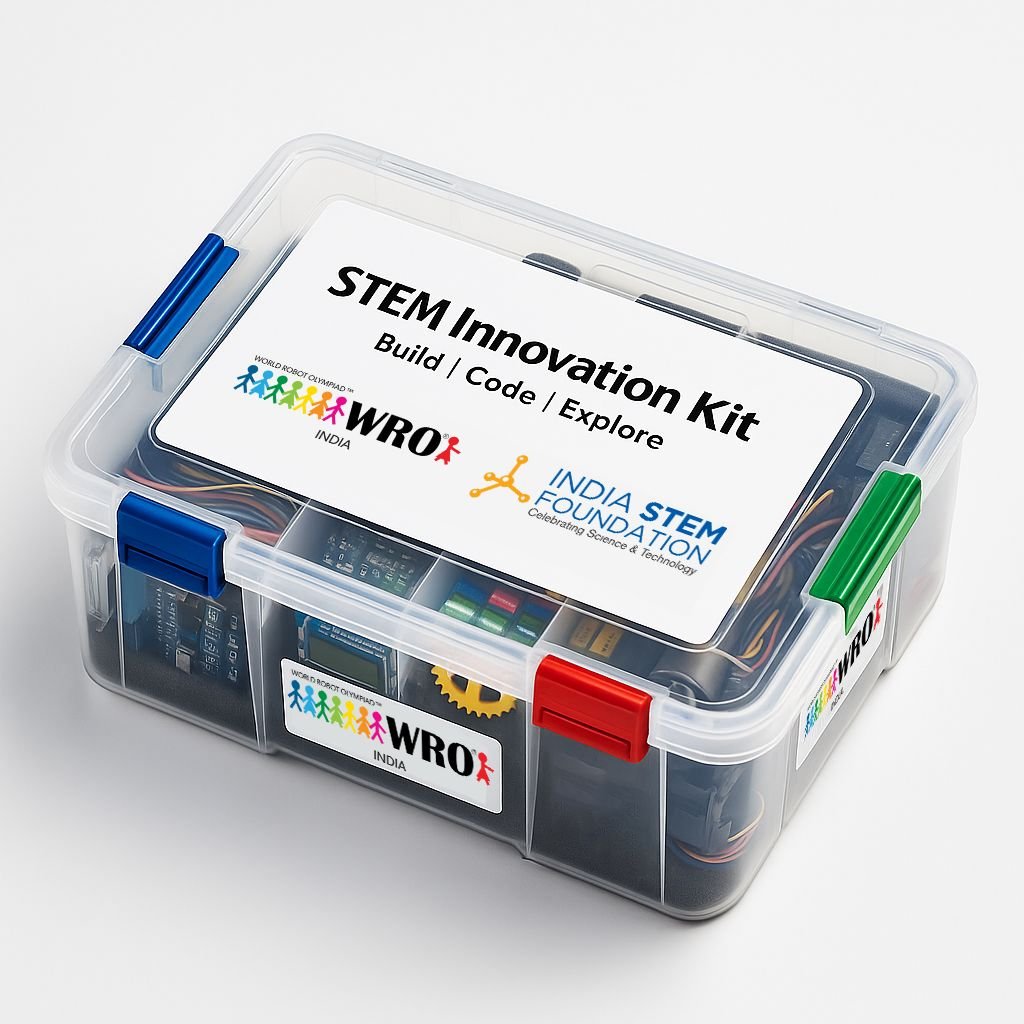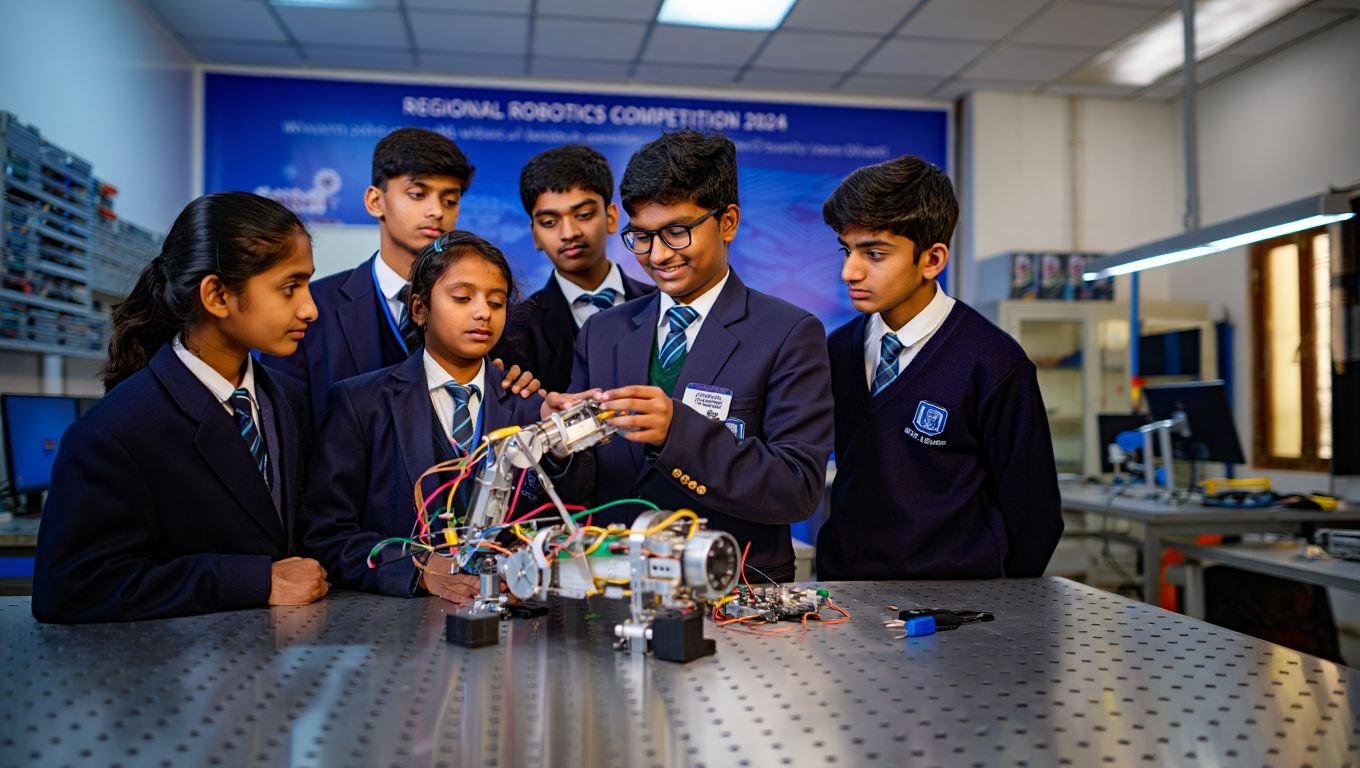Through interdisciplinary learning and problem-solving techniques, STEM education—which includes Science, Technology, Engineering, and Mathematics—prepares pupils to take on real-world difficulties. Robotic education is a fundamental part of this teaching methodology that teaches students about programming, automation, and engineering design. Students who work with robotics are able to design and operate robots with hands-on experience, which stimulates creativity and innovation. This combination develops students’ critical thinking, teamwork, and flexibility in addition to their technical talents. In order to develop the next generation of problem solvers, STEM, and robotics education are essential as the globe confronts more and more environmental and socioeconomic issues.
Robotic education equips students with the knowledge and abilities to use creativity and technology to solve urgent environmental issues. Students who master the design, programming, and operation of robots can provide answers for problems including waste management, pollution, and conservation. Precision farming, effective recycling systems, and automated ecosystem monitoring are just a few of the useful uses of robotics that support sustainability. Students learn how to apply technology-driven techniques and think critically about environmental concerns by participating in hands-on robotics instruction. This education encourages a dedication to resolving global environmental concerns in addition to developing technical proficiency.
The Intersection of Robotics and Sustainability
The dynamic merging of technology and environmental stewardship is represented by the junction of sustainability and robotics. With its accuracy and effectiveness, robotics provides creative answers to several problems encountered in the pursuit of sustainable development. Robots are being used more and more to improve sustainability efforts in sectors like waste management, energy, and agriculture by automating laborious jobs and consuming fewer resources. Robotics and sustainable practices can work together to produce systems that are both economically and ecologically sustainable. Smarter, more environmentally friendly solutions to the most urgent environmental problems facing the globe are being made possible by the convergence of sustainability and robotics.
The collaboration of robotics with other STEM fields is essential to developing solutions for environmental problems. When robotics and science work together, ecological data may be collected and analyzed by robots, which helps with environmental monitoring. The use of artificial intelligence and sensor technology has improved robots’ ability to tackle difficult problems like pollution and climate change. Robots that are energy-efficient and versatile in their surroundings are designed using engineering principles, and their performance and decision-making are enhanced by mathematical modeling. When combined, these fields enable robots to provide novel, long-lasting solutions that tackle pressing environmental issues.
Robotics in Environmental Monitoring and Conservation
Ecosystem Monitoring: Real-time data collection on wildlife numbers, vegetation health, and environmental changes may be obtained using robots that are outfitted with sensors and cameras.
Marine Conservation: By following marine life, monitoring coral reefs, and evaluating ocean health, underwater robots, or ROVs, contribute to the preservation of marine biodiversity.
Protection of Wildlife: Drones and ground robots can help with wildlife conservation efforts by tracking endangered species, stopping poaching, and keeping an eye on animal movements.
Forest Management: By monitoring the health of the forest, identifying illicit logging, and estimating the effects of deforestation, robotics helps to promote sustainable forest management.
Robots are capable of detecting and tracking pollution levels in soil, water, and the air. This data is useful for environmental cleanup projects and policy development.
Climate Change Research: To help with worldwide conservation efforts, robots are stationed in harsh and isolated locations, including the Arctic, to collect data on the effects of climate change.
Data gathering and analysis: State-of-the-art robotics are capable of gathering vast volumes of environmental data. These data may then be analyzed to yield insights that inform practical conservation strategies.
These ideas demonstrate how environmental conservation and monitoring are being revolutionised by robots, opening the door to more efficient and sustainable methods.
Robotics in Waste Management and Recycling
Automated Sorting: By effectively separating recyclable items from garbage, robots with AI and machine learning capabilities may increase recycling rates and lower contamination.
E-waste Recycling: By breaking down electronic trash, specialized robots can recover valuable resources like metals and lessen the negative effects of discarded gadgets on the environment.
Rubbish Collection: Drones and autonomous robots can optimise routes for collecting rubbish, cutting emissions and fuel costs while guaranteeing prompt disposal of waste.
Reducing Plastic Waste: Robots can detect and extract plastic debris from the ocean and other ecosystems, which helps to lessen the pollution problem.
Optimization of the Recycling Process: Robots can automate and simplify complicated recycling procedures, boosting productivity and lowering the need for human involvement in dangerous situations.
Landfill Management: To reduce their negative effects on the environment, robots can monitor landfill sites, identify potentially dangerous products, and control the decomposition process.
Trash-to-Energy Conversion: By assisting in the secure and effective transformation of trash into energy, robotics helps to reduce the amount of garbage that ends up in landfills and promotes sustainable energy alternatives.
These examples show how robots are revolutionizing recycling and trash management, increasing sustainability, efficiency, and environmental friendliness.
Energy-Efficient Robotics and Renewable Energy
They improve sustainability and lessen their influence on the environment, energy-efficient robotics are revolutionizing the renewable energy industry. These robots, which are made to use less energy, are used in the upkeep and optimization of renewable energy systems, such as solar farms, and wind turbines. Their capacity to carry out exacting, automated activities reduces energy waste and increases the infrastructure’s longevity for renewable energy sources. Additionally, by increasing productivity and cutting costs, robots are essential to the advancement of renewable energy technology. The renewable energy sector may boost productivity and help the world’s efforts to switch to greener, more sustainable energy sources by using energy-efficient robotics.
Agricultural Robotics for Sustainable Farming
Sustainable farming is being revolutionized by agricultural robots, which improves productivity while having less environmental effects. These robots carry out operations that reduce resource consumption and chemical discharge, including focused pesticide spraying, automated welding, and precision planting. Agricultural robots optimize crop management by utilizing data-driven insights, resulting in increased yields while utilizing less water and fertilizer. Additionally, labor-intensive jobs are handled by autonomous machines, which eliminates the need for physical labor and guarantees consistently high-quality products. Farmers may lessen their carbon footprint, preserve resources, and help create more ecologically friendly food production systems by implementing sustainable methods made possible by robots.To sum up, STEM education—which includes robotics—is essential in enabling students to use their practical knowledge and problem-solving skills to address real-world issues. By encouraging creativity, critical thinking, and technical proficiency, robotic education equips students to take on urgent environmental challenges. Through the integration of robots with sustainability initiatives, students may create inventive solutions for pollution control, waste management, and conservation. Robotics improves recycling procedures, helps renewable energy projects, and monitors and conserves the environment. A greener future is being ushered in by the growing synergy between robotics and STEM subjects, which opens the door to more intelligent and sustainable solutions to the world’s environmental problems.



